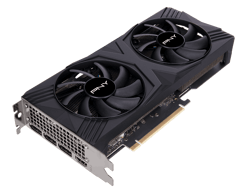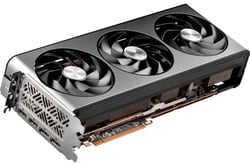RTX 4070 Super vs RX 7800 XT- Which is better for 1440p Gaming in 2025
4/9/2025
The competition between the RTX 4070 Super and the RX 7800 XT has sparked considerable interest among gamers, particularly those focused on 1440p performance. For gamers seeking the best experience at this resolution, the RTX 4070 Super generally offers superior performance, especially in ray tracing scenarios. Both GPUs bring solid specifications to the table, making the choice largely dependent on the specific gaming preferences and requirements of the user.
As titles demand more graphical power, understanding the strengths of each GPU becomes essential. The RTX 4070 Super excels in applications optimized for NVIDIA's architecture, while the RX 7800 XT offers impressive value and performance in traditional rasterization tasks.
Evaluating these graphics cards also involves considering their pricing, availability, and driver support, all of which factor into the overall gaming experience. Readers will gain insights into which GPU aligns best with their gaming style as this comparison unfolds.
RTX 4070 Super Overview
The RTX 4070 Super combines advanced architecture with powerful features tailored for high-performance gaming at 1440p. This section examines its architecture, unique characteristics, and performance benchmarks to inform potential buyers.
Architecture and Features
The RTX 4070 Super is built on NVIDIA’s Ada Lovelace architecture. This design focuses on efficiency and performance, boasting improved ray tracing and AI capabilities.
Key features include:
Ray Tracing Cores: Enhanced ray tracing performance allows for realistic lighting effects.
Tensor Cores: These cores improve AI-based processes like DLSS.
NVLink Support: Enables multi-GPU setups for demanding applications.
The GPU supports PCIe 4.0, optimizing data transfer rates. With 12GB of GDDR6X memory, it provides ample bandwidth for high-resolution textures.
Performance Benchmarks
In performance tests, the RTX 4070 Super excels in 1440p gaming scenarios. It delivers smooth frame rates across contemporary titles.
Key benchmarks include:
Cyberpunk 2077: Average of 75 FPS on Ultra settings.
Call of Duty: Modern Warfare II: Achieves approximately 120 FPS at high settings.
Shadow of the Tomb Raider: Reaches around 90 FPS with ray tracing enabled.
These results highlight its capacity for high-quality graphics while maintaining performance. The GPU effectively balances power consumption and performance, making it an appealing option for gamers seeking high fidelity.
RX 7800 XT Overview
The RX 7800 XT is designed for high-performance gaming, particularly at 1440p resolution. It leverages advanced architecture and features to meet the demands of modern titles while competing effectively in the mid-range segment of the market.
Architecture and Features
The RX 7800 XT is built on AMD's RDNA 3 architecture, offering significant improvements in performance and efficiency. It features a 5nm process that enhances power management while delivering higher clock speeds.
Key features include:
Ray Tracing Support: Enables realistic lighting and shadow effects.
8GB GDDR6 Memory: Provides ample memory bandwidth for 1440p gaming.
Infinity Cache: Reduces latency and improves performance in bandwidth-intensive scenarios.
This architecture enhances gaming experiences without significantly increasing power consumption, making it a strong contender for gamers.
Performance Benchmarks
In performance benchmarks, the RX 7800 XT consistently delivers robust frame rates across various titles at 1440p. In popular games like Cyberpunk 2077, it averages around 70 FPS on high settings.
Additional benchmarks show:
Metro Exodus: Approximately 65 FPS at ultra settings.
Control: Achieves roughly 72 FPS with ray tracing enabled.
These statistics highlight the RX 7800 XT's capability to handle demanding modern games while ensuring an enjoyable gaming experience. The utilization of features such as Smart Access Memory further enhances its performance, maximizing the potential of the GPU in compatible systems.
Comparison of RTX 4070 Super and RX 7800 XT
This comparison focuses on gaming performance at 1440p, the capabilities of ray tracing and upscaling technologies, and how power efficiency impacts thermal performance for both GPUs. Each factor plays a crucial role in determining the better option for gamers.
1440p Gaming Performance
When it comes to 1440p gaming, both the RTX 4070 Super and RX 7800 XT offer impressive performance. Benchmarks show that the RTX 4070 Super frequently exceeds 90 FPS in demanding titles like Cyberpunk 2077 and Battlefield 2042, especially with settings high.
In contrast, the RX 7800 XT generally delivers solid performance as well, reaching around 80-85 FPS in the same titles. The difference in performance may vary depending on specific games and settings, but the RTX 4070 Super often showcases superior frame rates.
In competitive games, both GPUs perform admirably, allowing high-refresh rates with competitive settings. It can be noted that the choice between them may hinge on other features, rather than pure performance numbers.
Ray Tracing and DLSS vs FSR
Ray tracing capability sets the RTX 4070 Super apart, leveraging NVIDIA's advanced architecture to deliver more realistic lighting and reflections. It supports DLSS, enabling performance gains in ray-traced titles without compromising visual fidelity.
The RX 7800 XT supports AMD's FidelityFX Super Resolution (FSR) technology, which enhances performance but typically does not reach the same level of quality as DLSS. While FSR provides a boost in FPS across several games, it may incur a slight loss in image quality compared to images rendered natively.
In titles featuring ray tracing, the RTX 4070 Super demonstrates significant advantages. Gamers who prioritize future-proofing and top-tier visuals may favor NVIDIA’s solution in this aspect.
Power Efficiency and Thermals
Power efficiency is a critical consideration for gamers concerned about long-term operating costs. The RTX 4070 Super has a typical power draw of around 200W, while the RX 7800 XT is slightly higher at approximately 250W.
Despite this, the thermal performance of both cards is commendable. The RTX 4070 Super maintains lower temperatures under load, thanks to its efficient architecture and cooling design.
Conversely, the RX 7800 XT tends to run warmer but often compensates with robust cooling systems. Users looking to build efficient systems with lower electricity bills may lean toward the RTX 4070 Super for its superior efficiency and thermal management.
Price to Performance Analysis
When evaluating the RTX 4070 Super and RX 7800 XT, price to performance is a key consideration for gamers focused on 1440p.
The RTX 4070 Super is priced at approximately $599. It delivers competitive performance, particularly in ray tracing and DLSS settings. The RX 7800 XT, on the other hand, is typically available for around $499. It offers strong performance in rasterization.
Performance Benchmarking
The average FPS indicates that both GPUs perform well, but the RX 7800 XT offers better value for its price.
Key Considerations
Ray Tracing: The RTX 4070 Super excels with ray tracing enabled, making it a better choice for gamers who prioritize this feature.
Rasterization: The RX 7800 XT holds an edge in traditional gaming, providing solid performance at a lower price point.
Buyers should weigh these factors based on their gaming preferences and budget. The RTX 4070 Super may justify its higher price for users focused on advanced features, while the RX 7800 XT serves as an appealing option for those seeking value.
Final Recommendations and Verdict
For gamers focused on 1440p performance, both the RTX 4070 Super and RX 7800 XT offer compelling features.
The RTX 4070 Super excels in ray tracing capabilities and NVIDIA-specific features like DLSS, enhancing graphical fidelity in supported titles. This card is likely the better choice for players prioritizing visuals and frame rates in ray-traced games.
On the other hand, the RX 7800 XT tends to deliver strong performance in traditional rasterization. It often comes at a more attractive price point, providing excellent value for gamers seeking high FPS without extensive ray tracing.
Recommendation:
For Ray Tracing and DLSS: Choose the RTX 4070 Super.
For Budget-Friendly Performance: Opt for the RX 7800 XT.
Selecting between these two will largely depend on the user’s gaming preferences and budget constraints. Each card serves distinct needs, ensuring a solid gaming experience at 1440p.
Other Related Blogs
RTX 4090 vs RX 7900 XTX: Which is better for Video Editing & Rendering in 2025
Compare the RTX 4090 vs RX 7900 XTX for video editing and 3D rendering in 2025. Discover which GPU delivers better performance, faster render times, and improved workflow for creative professionals.
Best GPUS for 4K Gaming & Ray Tracing
Dive into the top graphics cards built for ultra-smooth 4K gaming and stunning ray-traced visuals. This guide compares the best options for high frame rates, immersive lighting, and next-gen performance.












